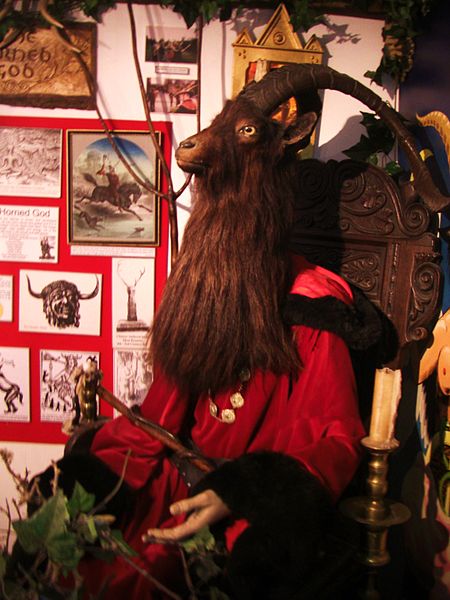Skyclad refers to ritual nudity in Wicca and Modern Paganism. Some groups, or Traditions, perform most or all of their rituals skyclad. Whilst nudity and the practice of witchcraft have long been associated in the visual arts, this contemporary ritual nudity is typically attributed to either the influence of Gerald Gardner or to a passage from Charles Godfrey Leland's 1899 book Aradia, or the Gospel of the Witches, and as such is mainly attributed to the Gardnerian and Aradian covens.
Artistic representation of a skyclad witch in Festival of the Witches by Luis Ricardo Falero, 1880
Wicca, also known as "The Craft", is a modern pagan, syncretic, earth-centered religion. Considered a new religious movement by scholars of religion, the path evolved from Western esotericism, developed in England during the first half of the 20th century, and was introduced to the public in 1954 by Gerald Gardner, a retired British civil servant. Wicca draws upon ancient pagan and 20th-century hermetic motifs for theological and ritual purposes. Doreen Valiente joined Gardner in the 1950s, further building Wicca's liturgical tradition of beliefs, principles, and practices, disseminated through published books as well as secret written and oral teachings passed along to initiates.
Wiccan jewelry, showing a pentacle necklace, a pentacle ring, and a torc. A pentacle is used by many adherents of Wicca. The pentacle is generally placed on a Wiccan altar to honour the elements and directions.
Altar statues of the Horned God and Mother Goddess crafted by Bel Bucca and owned by the "Mother of Wicca", Doreen Valiente
Sculpture of the Horned God of Wicca found in the Museum of Witchcraft in Boscastle, Cornwall
Athame, ritual knife or dagger used in Wiccan practices





